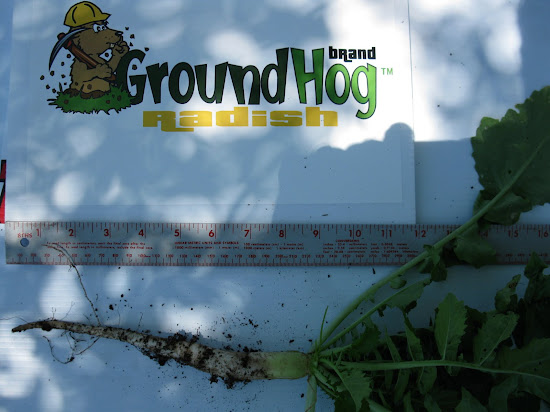GroundHog™ Radish
Nitrogen Mining & Nutrient Scavenging
Weed Suppression
Aerates Ground and Alleviates Soil Compaction
Promotes Water Infiltration
Pilot Hole Root Penetration
Reduction of Tillage & Chemical use
May Provide Nematode Control
Description
GroundHog™ Brand radish produces more root mass than oil seed radish or mustards. This extra large root system allows GroungHog™ to pull nitrogen and nutrients deep within the soil and bring them back to the surface. According to University of Maryland soil scientist, Ray Weil, a radish cover crop will capture 150 to 200 pounds of nitrogen per acre before winter killing. Upon decomposition, the nitrogen uptake becomes available to the next cash crop. GroundHog™ Brand radish will scavenge other nutrients as well.
GroundHog™ Brand radish has 2-4 times the amount of roots as rye or rape. (at 10"-20") Upon decomposition, these roots leave large holes in the ground that improve water infiltration and soil aeration.
Other Info
Applications:
Use as a cover crop to "mine" nitrogen and other nutrients that normally would leach out of your soils. GroundHog™ can also be used for weed suppression. When planted in August, radish cover crops emerged at the same time as the weeds but grow rapidly forming a closed canopy by the beginning of October, a month before spring oat and fall rye cover crops. During the winter, radish will decompose leaving a thin film of residue covering the soil.
Sowing and Establishment:
Seed from August - September (earlier in the north and later in the south) at 10-12lbs per acre. Broadcasted, or 1/4 inch deep if drilled. Aerial seeding into soybeans before leaf drop. Apply 60 units of N for best root growth potential. GroundHog™ doesn't like wet spots and will winter kill with temperatures in the teens.
GroundHog™ can be planted with other brassicas, clovers and grasses. As with all brassica crops, GroundHog™ should be use in a rotation with other species.
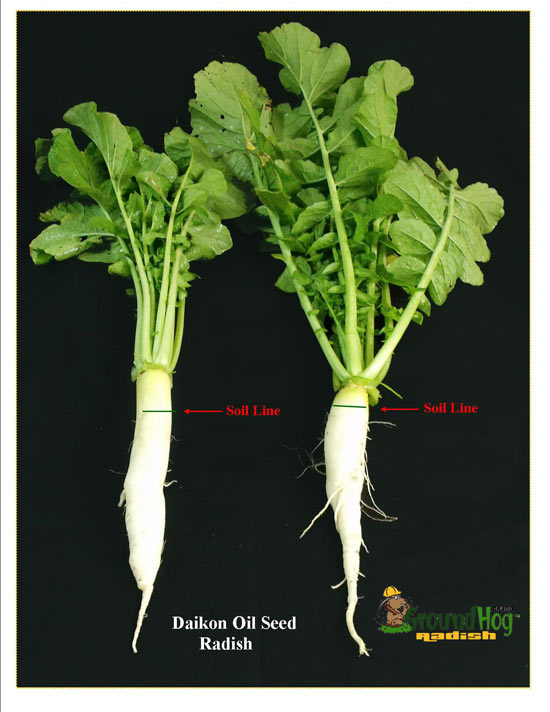 Notice the difference in the secondary roots. The GroundHog's superior secondary roots help to increase its overall effectiveness. Photo is courtesy of The Seed Center.
Notice the difference in the secondary roots. The GroundHog's superior secondary roots help to increase its overall effectiveness. Photo is courtesy of The Seed Center.
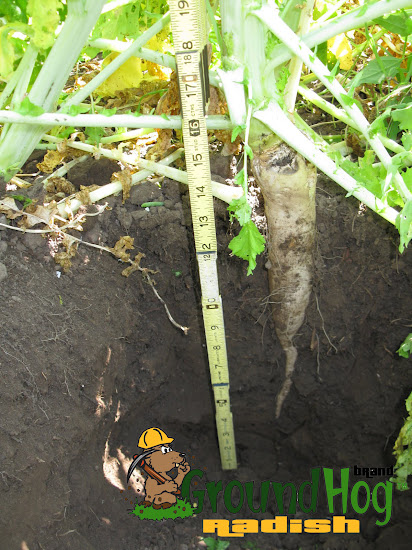
GroundHog™ Radish at 2 months old.
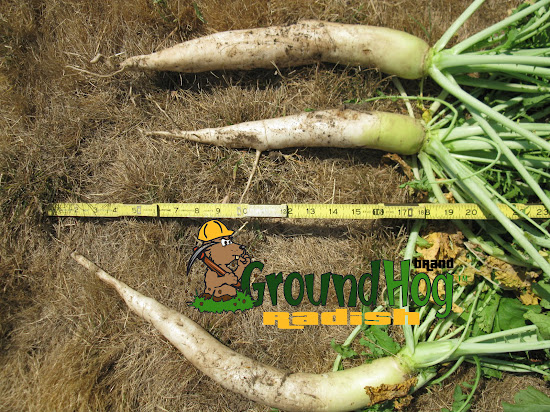
GroundHog™ Radish at 7 weeks old.
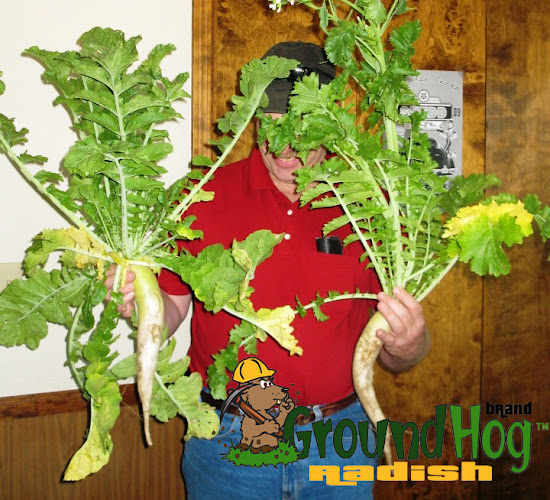
GroundHog™ Radish at 8 weeks old.
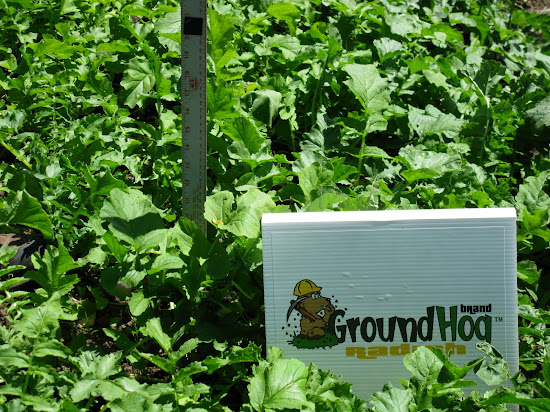
GroundHog™ only one month after planting! (Above and below.)
